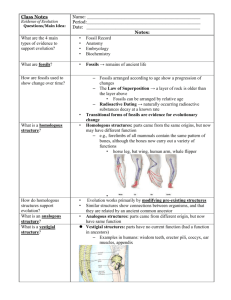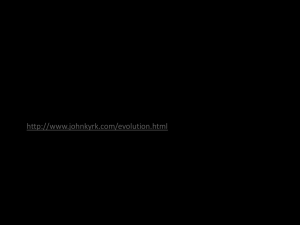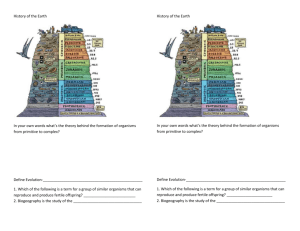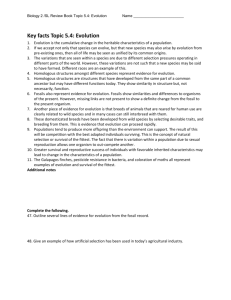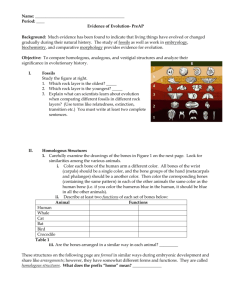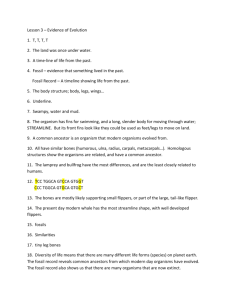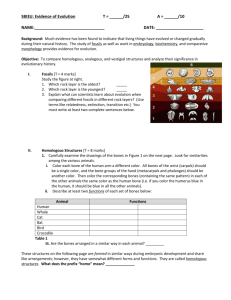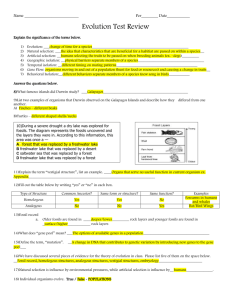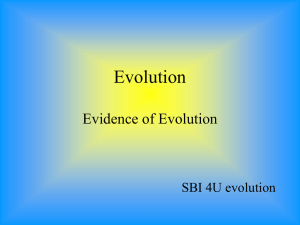Evidences of Evolution
advertisement
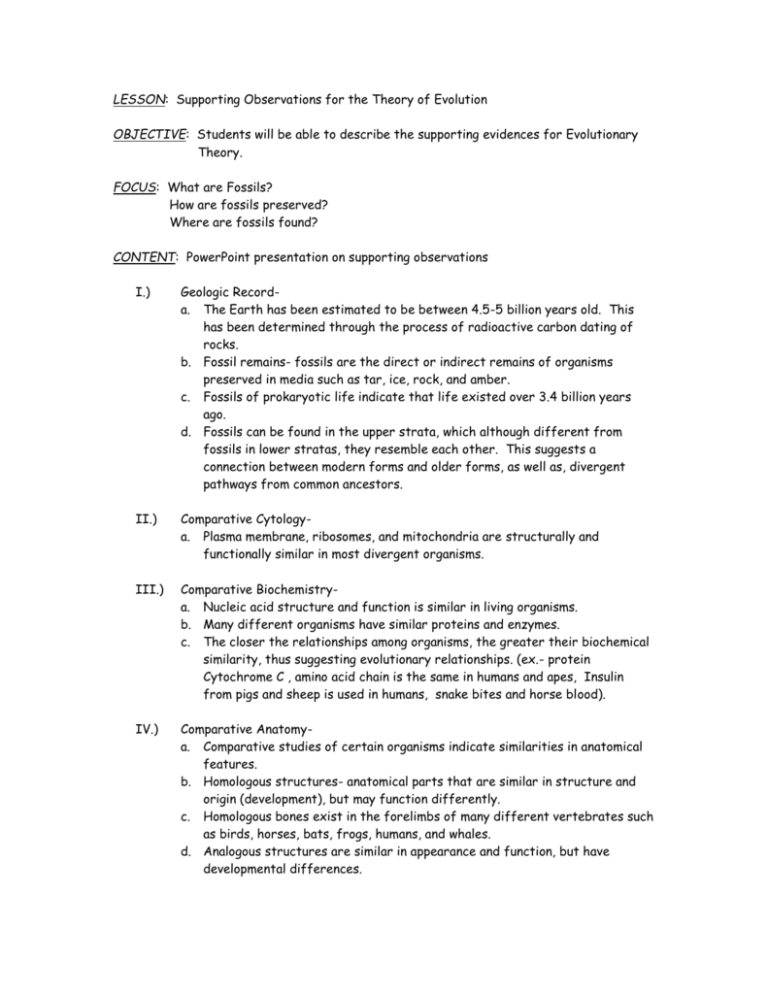
LESSON: Supporting Observations for the Theory of Evolution OBJECTIVE: Students will be able to describe the supporting evidences for Evolutionary Theory. FOCUS: What are Fossils? How are fossils preserved? Where are fossils found? CONTENT: PowerPoint presentation on supporting observations I.) Geologic Recorda. The Earth has been estimated to be between 4.5-5 billion years old. This has been determined through the process of radioactive carbon dating of rocks. b. Fossil remains- fossils are the direct or indirect remains of organisms preserved in media such as tar, ice, rock, and amber. c. Fossils of prokaryotic life indicate that life existed over 3.4 billion years ago. d. Fossils can be found in the upper strata, which although different from fossils in lower stratas, they resemble each other. This suggests a connection between modern forms and older forms, as well as, divergent pathways from common ancestors. II.) Comparative Cytologya. Plasma membrane, ribosomes, and mitochondria are structurally and functionally similar in most divergent organisms. III.) Comparative Biochemistrya. Nucleic acid structure and function is similar in living organisms. b. Many different organisms have similar proteins and enzymes. c. The closer the relationships among organisms, the greater their biochemical similarity, thus suggesting evolutionary relationships. (ex.- protein Cytochrome C , amino acid chain is the same in humans and apes, Insulin from pigs and sheep is used in humans, snake bites and horse blood). IV.) Comparative Anatomya. Comparative studies of certain organisms indicate similarities in anatomical features. b. Homologous structures- anatomical parts that are similar in structure and origin (development), but may function differently. c. Homologous bones exist in the forelimbs of many different vertebrates such as birds, horses, bats, frogs, humans, and whales. d. Analogous structures are similar in appearance and function, but have developmental differences. e. Examples of analogous structures are the wing of a bird and the wing of a butterfly. Hand out dittos on Homologous structures. Ask if students can give examples of other homologous structures? What makes these structures homologous? V.) Comparative EmbryologyComparative study of early embryonic developments among groups of organisms reveals similarities that suggest common ancestry. a. Early vertebrate embryos resemble each other. b. As development proceeds the distinctive features of each species becomes apparent. c. All have gill slits, tails, segmented backbones, and are C-shaped. Hand out ditto on comparative embryology. VI.) Vestigial Structuresa. These are structures that do not have any use , but are the remains of structures that were once functional in ancestral organisms. b. Examples of vestigial organs are; 1. Humans- appendix, coccyx, 3rd molars 2. Horses- splint bones 3. Whales- pelvic (hip) bones MATERIALS: PowerPoint presentation Handouts Overhead transparencies Notes SUMMARY: What are homologous structures? How does comparative embryology support the Theory of Evolution? What is a vestigial organ? Tell me one fact that you learned in class today. HW: Do the following vocabulary list: Natural variation Artificial selection Struggle for existence Fitness Adaptation Survival of the Fittest Natural Selection Descent with Modification Homologous structure Vestigial organ
